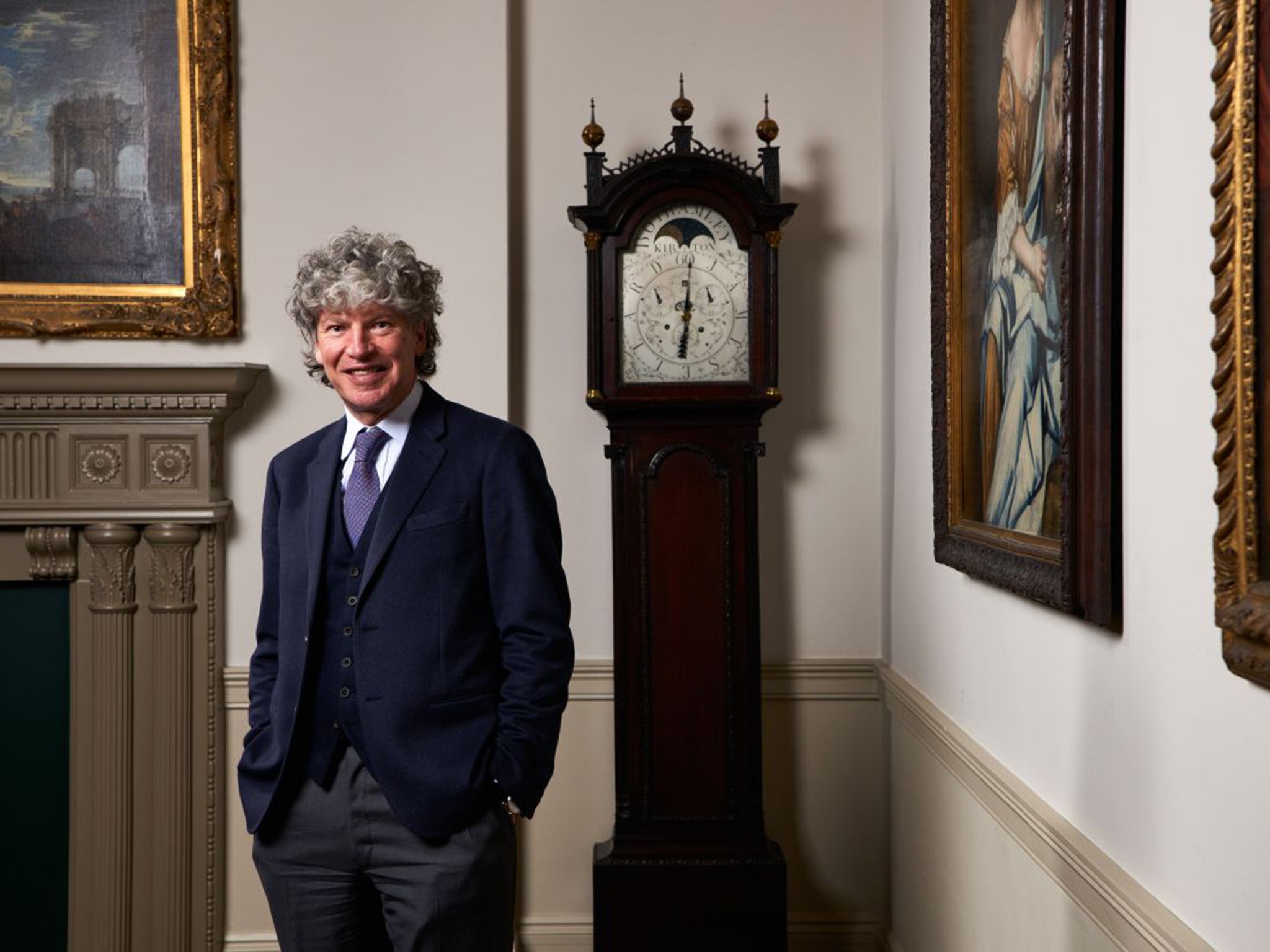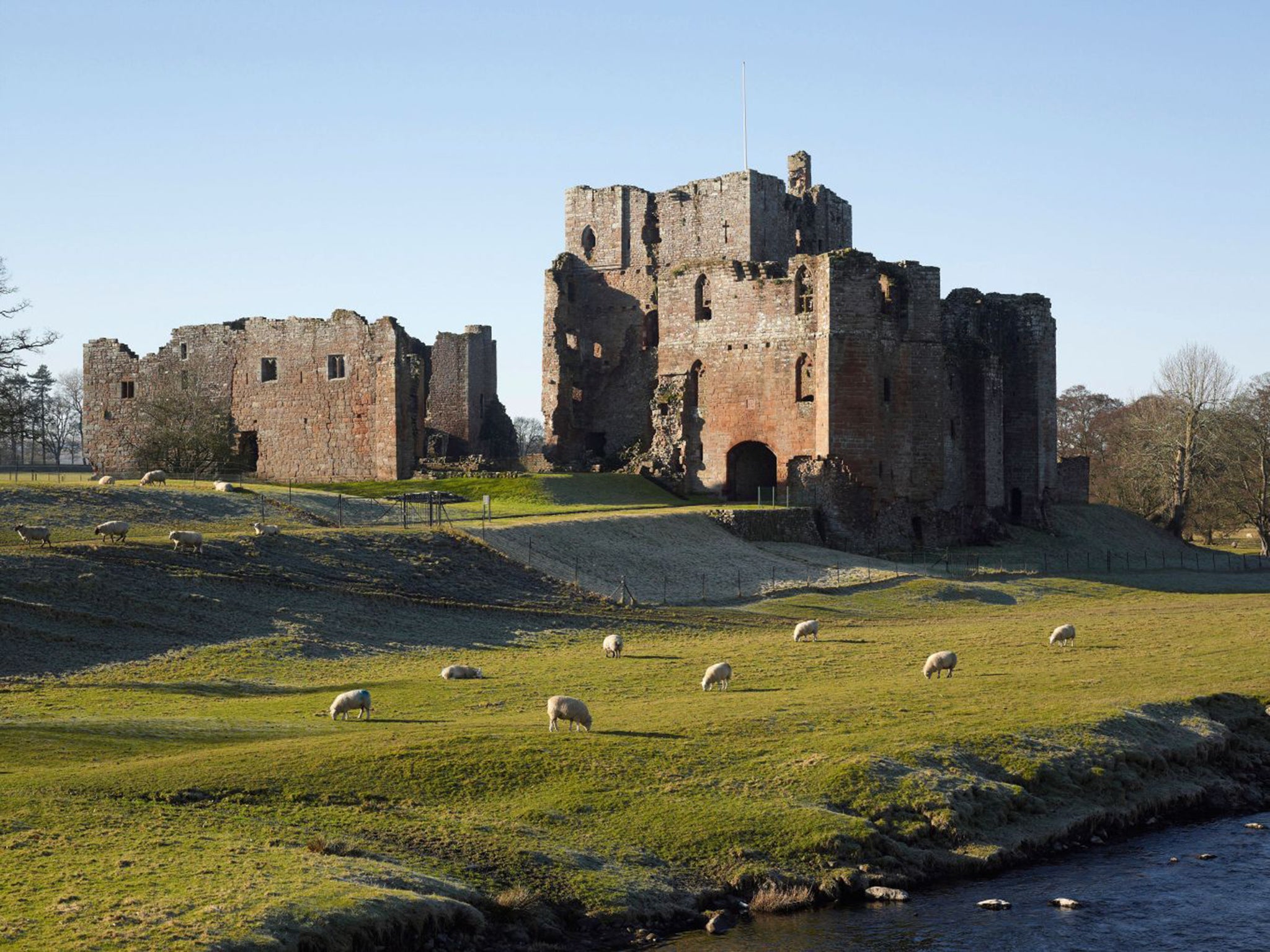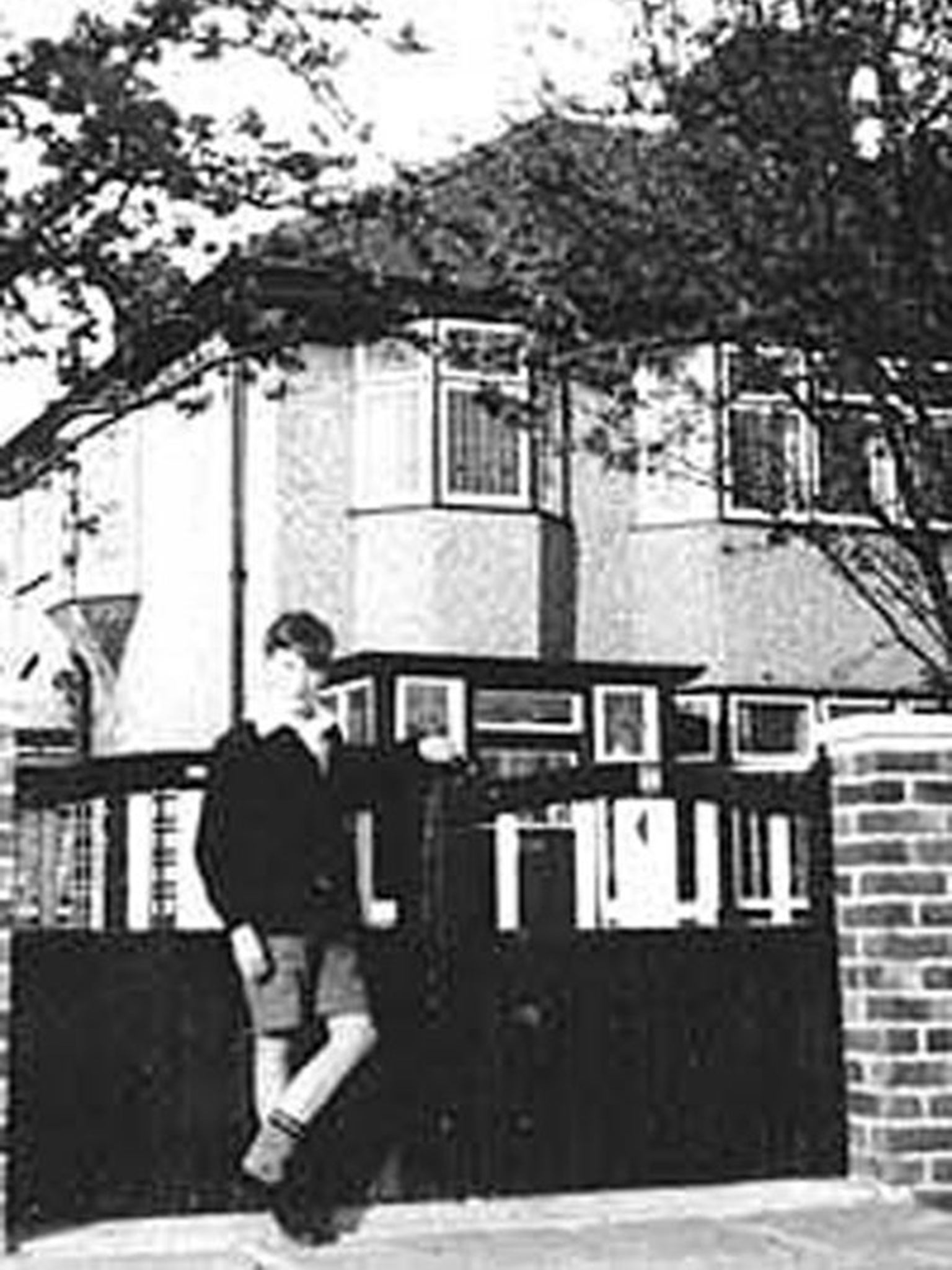National Trust chairman Tim Parker says organisation must be more diverse - but not Disneyfied
'We need to pay more tribute to the people, both rich and poor, who have gone before us and created what we’ve inherited'

‘Everything we have that is beautiful was almost certainly built by the exploitation of someone else,” says Tim Parker with a thin smile. The chairman of the National Trust, who was appointed in November 2014, is surprisingly frank about how his vast organisation owns homes, treasures and land all over the country that were built or bought with the profits of the slave trade or the exploitation of workers. Everything that required immense amounts of work was built on someone being paid very little by someone who usually had a lot. They’re all dead. We can’t change that.”
For a moment, he really does sound like the Prince of Darkness. That’s what the unions called Tim Parker when he was building a reputation – and a fortune – as a ruthless corporate fixer, saving companies by shutting down their shops and factories and putting people out of work, before going on to make huge profits. So he could almost be sympathising with all those dastardly slave traders and mill owners when he says: “The danger is that we start to impose too many post-hoc moral judgements on people whose world-consciousness 100 or 200 years ago was entirely different.”
But his comments are deceptive. This tall, slim multi-millionaire with a beautifully tailored three-piece suit and a shock of silver and grey curls – cut into the mullet Seventies footballers used to wear – could be on a yacht or a tropical island right now, but instead he’s in his office on the top floor of an elegant, if slightly battered townhouse close to Victoria Station in central London.
He’s here two or three days a week, chairing the board of the National Trust and supporting the director general, Dame Helen Ghosh. Working for nothing. And he’s not actually being dismissive about the lives of those who suffered to make Britain prosperous (and pay for the grand houses, sweeping landscapes and art collections we admire today). Quite the opposite. He wants the trust to do more to acknowledge their sacrifice.
“We have to see things for what they are. Having some very visible roots of where we’ve come from is of immense value. We need to pay more tribute to the people, both rich and poor, who have gone before us and created what we’ve inherited,” says Parker, 60, in his first major interview since taking office.
For example, three new artists in residence at Penrhyn Castle have been given permission to delve into the dark secrets of the past, including its connection to slavery.
The Trust will have its work cut out, with 300 historic houses – from spectacular castles to John Lennon’s childhood home in Liverpool – as well as 600,000 acres of land and 775 miles of coastline in England, Wales and Northern Ireland. But Tim Parker believes it is worth doing, because the National Trust has a part to play in helping all of us – including recent arrivals to this country – understand where we are and what has gone on before.
“I think the country where you live has a history and, as we all know, histories are open to all kinds of interpretation and there is no right history. But one thing for sure is the places that are left behind by history can form part of people’s feeling of belonging to something.”

This is a kind of progressive nationalism that believes we can best grow as a society and learn from incoming cultures if we understand our own, come to terms with it and celebrate the best of it wholeheartedly. He may say there’s no right history, but no organisation does more than the National Trust to express its own coherent view of who we are and what we believe in.
“We stand for beautiful and historic places,” says a typical statement of its brand values. “We help people belong to places, and places belong to people. We all need beauty in our lives. We all need fresh air, open doors, hidden depths, new views. We need places that can lift our spirits and help us to find a different rhythm in our lives. This kind of refreshment isn’t a luxury: it’s vital.”
Breathless as that sounds, it hints at how the trust increasingly markets itself as offering a place to refresh your soul as well as enjoying beauty, heritage and a nice cake. As membership soars and congregations dwindle, you could call it the most successful church in the country.
“It’s no surprise to me that in a world which is 100 per cent full-on, all the time, people are looking for antidotes to that and for balance in some kind of a way,” says Parker. “Getting out to see things that are entirely natural – being exposed to the elements, the colours, the smells – is very important. That is being articulated more today, because people have less time to actually go and do it.”
The Trust has 10 times more members than all the political parties put together, and they have flexed their muscles in recent years, with a campaign against George Osborne’s relaxation of the planning laws.
“I don’t think we’re self-consciously a political force, I disagree with you there,” says Parker, surprisingly, despite both the present and former director generals having said that the Trust is just that. He takes a different approach. “If you become a constant shouting organisation, the currency of your opinion tends to diminish over time.”
The sense of the trust being more than just a charity that runs posh houses was embodied by the previous chairman, the writer and conservationist Sir Simon Jenkins. So some members were alarmed when he was succeeded by a man who is apparently all about the profit margin.
“I’ve got a lot of experience in dealing with complex organisations. I’m very much interested in getting stuff done. And I have a deep passion for what we do,” says Parker, who has a strong handshake and a friendly manner, but shrewd eyes.
He sold property and slashed jobs as the chief executive of Clark’s shoes in the Nineties but the profitability of the company soared by 150 per cent. Kwik Fit was next and profits there rose by 250 per cent.
Legend has it he earned the nickname the Prince of Darkness for turning up to announce redundancies in a Porsche 911, but Parker says it came from his four years as chief executive of the Automobile Association, which involved halving the head count.
“The Prince of Darkness thing is a bit of a throwaway line that goes back to some dispute inside the AA between two unions.
“It does stick. I think most people who have met me, hopefully, will see that’s not the case.”
After a short stint as Boris Johnson’s deputy mayor of London on a token £1 salary, he moved to Samsonite, got rid of the management and turned the company around, taking a £30m reward. Does he recognise himself as ruthless?
“I would argue that if you’re willing to take some tough decisions it’s very easy to say that they are ruthless or unfeeling. For me, tough decisions are often about creating foundations for the future.”
Can we expect to see him do the same in this job? “The Trust has no such issues, I think it’s in extremely good condition at the moment, we’re not an organisation in need of any turnaround or anything. But I hope people will see that I’m a person who tells it how it is.”

Let’s see about that. Why did he take the job? “I’ve been blessed; very fortunate in every respect. I have enough. I wanted to give something back.” How much is enough? I’ve heard it’s £100m.
“The best way I can answer your question is to say that it’s much, much more than I ever thought I would have.”
Parker is also chairman of the Post Office, although not for free. He likes playing the flute, going to the opera and running in the countryside around his Queen Anne house in Hampshire, where he has restored an historic walled garden with Therese, his wife of 31 years.
The last of their four children is about to leave for university. They sound like a classic, if unusually prosperous, National Trust family. But isn’t his charity just a little too middle class?
“It’s very true. Every organisation these days would like to appeal to every element in society equally. The reality is that we have a disproportionate number of older people among our members. People who are generally non-white are a small minority of those you will see around a Trust property.”
That’s a mealy-mouthed way of saying yes, it is mostly older white people who visit historic houses; but he insists there is a much wider range of backgrounds among the 200 million visitors to lakes, landscapes and shorelines every year.
“I personally am very keen to broaden our base and broaden our interest. However, it cannot be artificially wrenched.”
What does that mean? “You can’t change your audience very easily. Over time I think we will get a broader church. There are new things that we might acquire.”
Look out for the charity buying up fascinating factories, historic recording studios and other urban projects then. At some properties there are already actors in period dress, games to play and costumes to put on. Is the National Trust copying Disney? The question irritates him.
“The idea that we are either a place with lots of happy families turning up for an amusement-style experience or an organisation that’s faintly condescending and allows you to look around then quietly moves you on, it’s a false dichotomy.
“You can be both those things and we are, I think.”
Actually, I think he means they are neither. But is the National Trust dumbing down? “What could I possibly say to that? The fact is that the vast majority of people who come to National Trust properties require a place where they can park their car, somewhere they can go to the loo, get a nice cup of tea, look at nice well tended gardens; and that’s before they’ve even got close to the culture, as it were,” he says.
“And they require a warm reception. All of those things are essential to a good experience, However, they are not mutually exclusive with a first-rate presentation of what we have. We are investing more than ever in reducing our backlog of conservation.”
The Prince of Darkness still wants to turn a profit, there’s no question about that; but now he’s looking to use it to promote heritage and beauty, as well as honesty about the past.
“If we cannot explain well what we have then we have failed.
“Conservation is about passing the object on as you found it to the next generation, but with a better understanding of what it is and where it’s come from. We’re deadly serious about that.”
Join our commenting forum
Join thought-provoking conversations, follow other Independent readers and see their replies
Comments